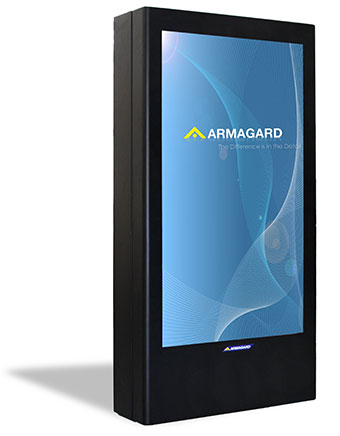Protecting screens for use in outdoor environments is not as simple as many people think. While protection from the weather using an LCD enclosure ultimately means keeping the screen dry and out of the elements, various different challenges mean that any LCD enclosure based TV system designed for outdoor use requires a high degree of sophistication.
 Outdoor environments differ in weather elements, temperature and seasonal extremes. Different locations can have dramatic swings in temperature, while freak weather occurrences can also occur, so any LCD enclosure protection system for an outdoor screen needs to consider all these variables and encompass systems to cope for the extreme and unexpected.
Outdoor environments differ in weather elements, temperature and seasonal extremes. Different locations can have dramatic swings in temperature, while freak weather occurrences can also occur, so any LCD enclosure protection system for an outdoor screen needs to consider all these variables and encompass systems to cope for the extreme and unexpected.
The difficulty with protecting a TV screens from different weather variables is that often that can mean using contradictory methods. For instance, any screen, even in the mild climates can easily overheat if measures are not taken. This often involves using cooling fans that move the hot air way from the screen to replace it with cooler, fresher air. However, having vents to expel and allow fresh air in, also creates problems when you consider other weather elements such as rain, which need to be kept away from the screen.
A similar contradiction occurs when you try to counter the extreme variables in temperature that many locations experience during different seasons. In summer, it may well be that a screen is vulnerable to overheating and needs methods of cooling, while in the winter, freezing temperatures may require heating methods to prevent the screen from freezing.
Other contradictions exist for outdoor screen protection too. Any screen left outside will need protection from physical impact such as caused by vandalism. This requires a solid structure housing the screen. However, because an audience needs to view a TV screen, the screen face requires transparency, and most transparent material such as glass are fairly brittle.
Outdoor TV enclosures utilise some ingenious and sophisticated methods to counter these contradictions and ensure comprehensive protection regardless of the environment they are located.
Temperature is controlled by a combination of cooling fans, insulation and heater systems, with exhausted hot air and access to cool air, permitted through intricate venting systems that prevent elements such as rain from permeating inside the enclosure while still allowing free movement of air. This enables an outdoor TV enclosure to cope with severe heat of summer–even in the hottest of locations–whilst also coping with the freezing temperatures of winter and Arctic locations.
Furthermore, the steel housing that protects the majority of the TV enclosure is accompanied with shatterproof screens that ensure maximum visibility of the display, while still protecting the screen face from impact.
Outdoor TV enclosures utilise some innovative and sophisticated engineering solutions to counter the various challenges that outdoor environments pose. Few other outdoor TV systems offer such comprehensive protection, which makes TV enclosures the preferred choice for most outdoor TV applications.









Comments are closed.